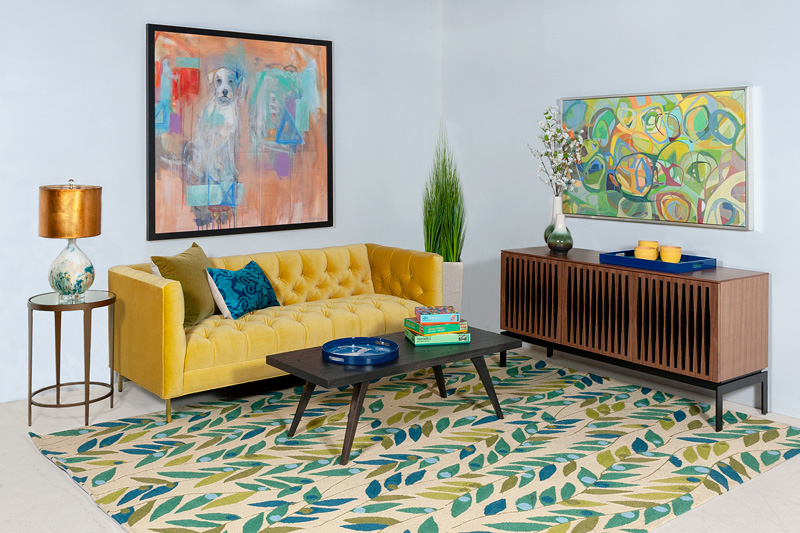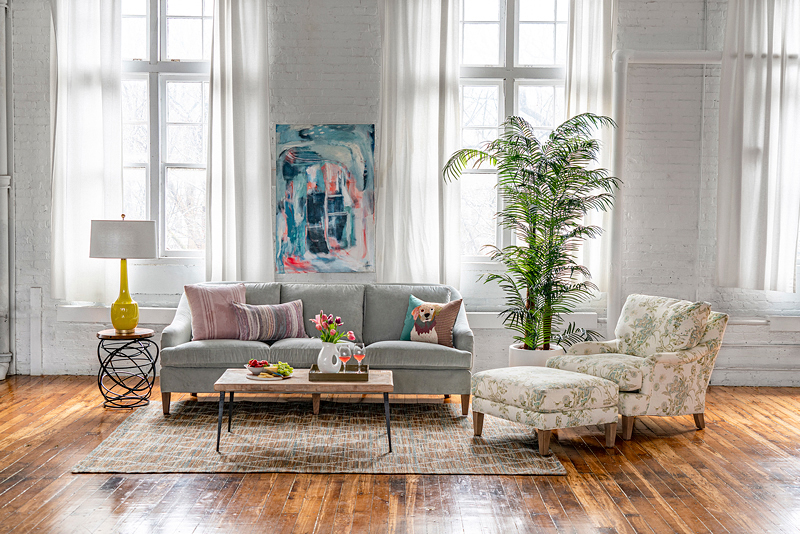22
Sep 2021
If you’ve ever walked into a room and noticed one side was furnished and decorated while the other didn’t look quite as “full,” it may have felt like something was missing or off.
Designing different rooms in your home involves more than just picking out furniture. You want there to be a cohesive flow that moves your eye around the space, which you can achieve through proportion, scale, and balance. By doing this, you’re influencing the overall look and feel of a room so that it’s inviting yet functional and practical.
Since creating proportion, scale, and balance takes careful thought and consideration, we spoke with Cindy Rubenfeld, our Middleton Store Manager, to get her expertise on how to approach it.

Proportion: What it is, what it does, and how it relates to scale and balance
Cindy described proportion as “a visual balance of objects, accessories, and furniture, and it deals with adding some textures, colors, patterns, shapes, and sizes.”
You can think of it as an object compared to another object or even part of a room compared to the room as a whole. It’s all visual: how texture plays out in one space to another or how you balance the different objects you have in a room. Everything affects each other.
“You don’t want to have one grouping of large objects on one side and small on the other,” Cindy explained. “It deals with placing them together to create a more harmonious room.”
For example, the proportion of one object to another can be too small. A large sofa would look out of proportion with a small coffee table in front of it. This is where you’d want to consider the length of the table in comparison to the length of the sofa.
Color is another example that can affect the look and feel of a room. Say you have a navy accent wall. A plain white wall opposite of it might feel too “heavy,” so you could pull navy onto the white wall through a few pieces of artwork to create a balancing act.
.jpg)
Scale and balance
Scale focuses on the size of an object in a room compared to another. A lamp for your living room should have enough height to appropriately light up the space. Something smaller that’s sitting on an end table may not be able to achieve this.
Balance is more about where you place objects in a room. Bigger items, for example, shouldn’t all sit together in one area. Instead, you’d want to disperse them around the room to create a better balance with smaller items. Think of it like a scale: placing everything on one side is going to weigh it down and create an imbalance.
Keep in mind that achieving balance doesn’t mean you need two pieces of furniture. You can put something like a bookcase on one wall and then balance it out with a grouping of photographs, or even a large plant, on the other.
You can also think of balance in terms of symmetry and asymmetry:
-
Symmetrical balance means objects on one side are the same as the other side (like a mirror). You could have a sofa with two of the same end tables sitting on opposite ends and the same lamps on top, or you could balance your doorway with bookcases on either side.
-
Asymmetrical balance means balancing out objects with something similar in visual volume, but different otherwise. For example, a tree placed off to the side can balance out a grouping of pictures or a vase on the floor with a picture above it.
Choosing between the two will depend on your preferences and what your goals for a particular room are. Symmetrical balance can create a formal look whereas asymmetrical leaves more flexibility to play around and get creative with placement.
Proportion and room size
Room size will influence the pieces you buy to furnish it with. If you have a 24x28 living room, a large sectional would work well compared to two small loveseats.
Now if you have a living room that’s 13x15, an apartment sofa with two small chairs would better suit it opposed to a sectional and two recliners.
The pieces you choose should have enough weight to them so they work in proportion to the size of the room they’re being placed in.
How to achieve proportion with an open floor plan
Proportion also applies to open concept floor plans when you’re utilizing one large space as two separate areas.
Say your open floor plan consists of the dining room and the living room. Your dining room could have a buffet, hutch, table, and chairs with the hutch balancing out another tall object on the opposite side in the living room - maybe where the TV is.
You could also pull colors from one room into the other:
“Even though they’re “separate,” it’s a unification of two spaces,” Cindy explained. “You’re moving colors and elements from one area to the other so that they flow and work together.”

Tips when creating proportion in a room
As you’re designing your space, there are tips you can follow to create proportion, balance, and scale:
-
Balance out the room with furniture and accessories that are in proportion to the size of other pieces.
-
Consider what each room is going to be used for and who will be using it.
-
Keep traffic flow in mind so you can walk in, out of, and around the room without any issues or something blocking your path.
-
Don’t overdo it with too many pieces of furniture crowded into one space, but make sure it’s not underdone either.
Reach out to a Design Consultant
If you need help achieving proportion, scale, and balance to create functional spaces in your home, get in touch with one of our Design Consultants and they’ll be happy to answer your questions!

